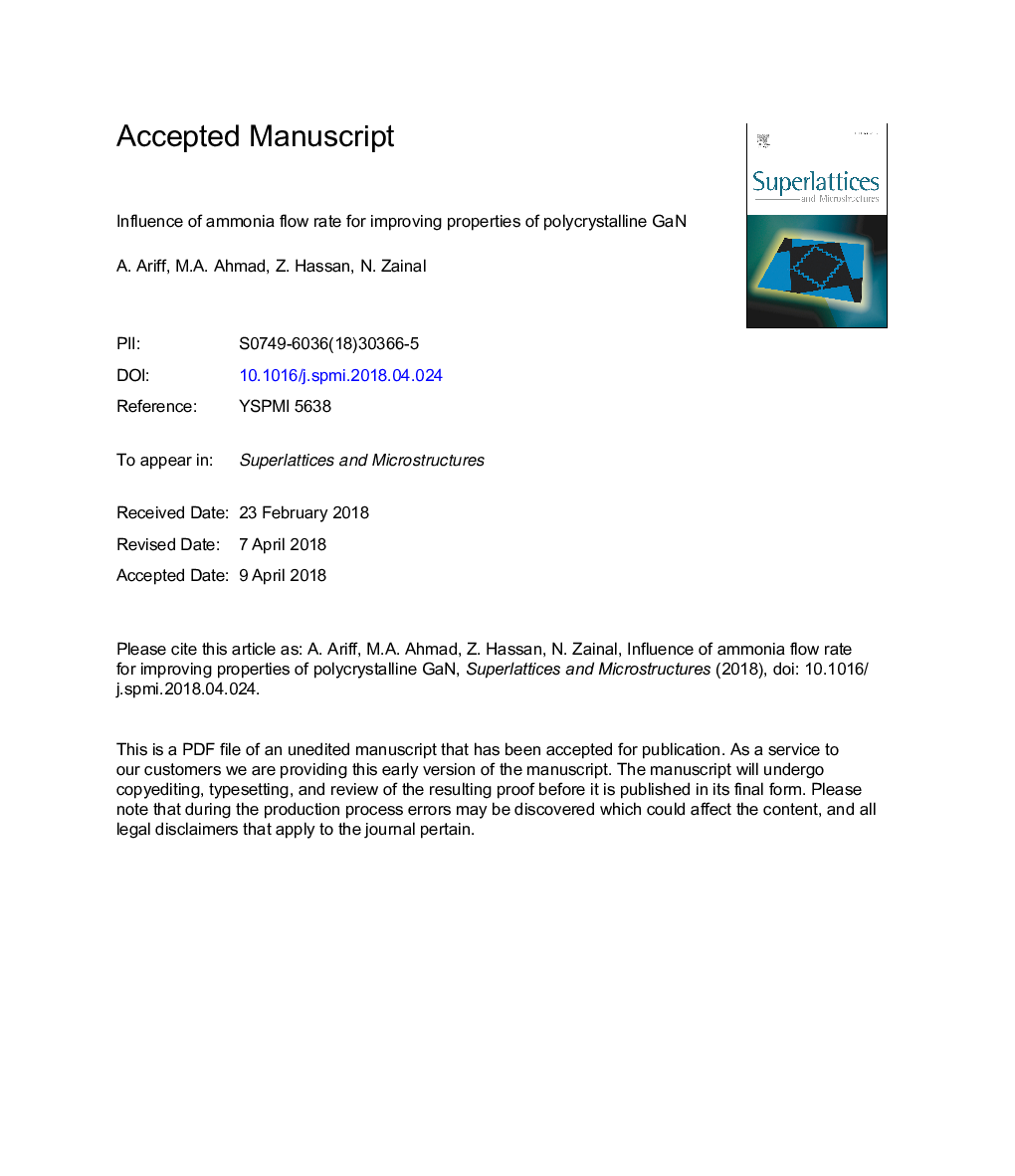| Article ID | Journal | Published Year | Pages | File Type |
|---|---|---|---|---|
| 7938664 | Superlattices and Microstructures | 2018 | 18 Pages |
Abstract
Post-annealing treatment in ammonia ambient is widely accepted for GaN material, but less works have been done to investigate the influence of the ammonia (NH3) flow rate for reducing the N-deficiency as well as improving the quality of the material. In this work, we investigated the influence of NH3 flow rate at 1, 2, 3, and 4 slm in improving properties of a â¼1â¯Î¼m thick polycrystalline GaN layer. Our simulation work suggested that the uniformity of temperature and pressure gradient of the NH3 gas did not lead to the reduction of N-deficiency of the polycrystalline GaN layer. Instead, it was found that the mitigation of the N-deficiency was strongly influenced by the fluid velocity of the NH3 gas, which had passed over the layer. Either at lower or higher fluid velocity, the chance for the active N atoms to incorporate into the GaN lattice structure was low. Therefore, the N-deficiency on the polycrystalline GaN layer could not be minimized under these conditions. As measured by EDX, the N atoms incorporation was the most effective when the NH3 flow rate at 3 slm, suggesting the flow rate significantly improved the N-deficiency of the polycrystalline GaN layer. Furthermore, it favored the formation of larger hexagonal faceted grains, with the smallest FWHM of XRD peaks from the GaN diffractions in (101¯0), (0002) and (101¯1) orientations, while allowing the polycrystalline GaN layer to show sharp and intense emissions peak of NBE in a PL spectrum.
Keywords
Related Topics
Physical Sciences and Engineering
Materials Science
Electronic, Optical and Magnetic Materials
Authors
A. Ariff, M.A. Ahmad, Z. Hassan, N. Zainal,
